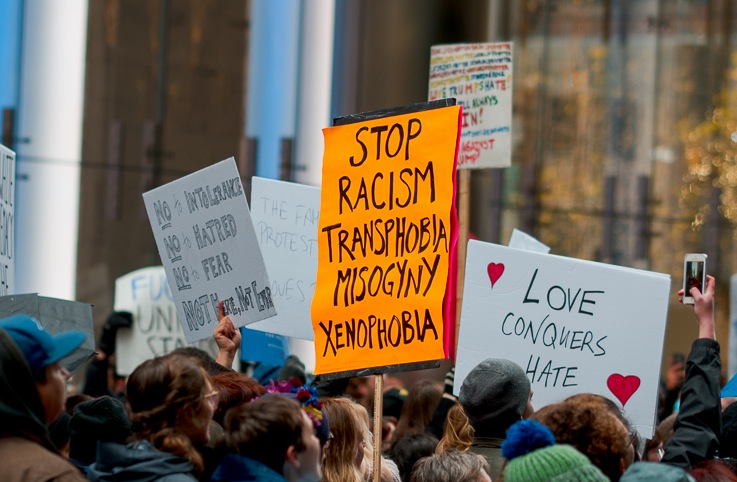
Ryan
A November protest against the then president-elect.
When academics of the future set out to chronicle the history we’re now living through, their temptation will be to cast the Trump era in all its facets as a rupture, an earthquake — something sudden and, if not exactly surprising, alarming for the speed and scale with which it burst from beneath the surface.
That interpretation will miss a big part of the picture. Some of what’s happened since Election Day truly is without precedent. But other headlines have a long backstory. Aggressive immigration enforcement is not new. The debauching of public discourse didn’t start with @realDonaldTrump. And the apparent rise of hate crimes since the election could be just the latest wave.
As statistics reported by the state Division of Criminal Justice show, New York saw a burst of hate crime in the last election year, 2012, as it reportedly did in 2016. (The 2016 numbers are not yet available.) That subsided in most parts of the city in 2013, but then rose broadly in 2015.
Not every bias incident gets reported, of course. And it’s possible that when the 2016 numbers come out, the Trump election will be associated with an order-of-magnitude change in reported bias incidents. The stats indicate, however, that in the five boroughs at least, it is not uncommon for there to be big shifts year to year in the number of hate crimes.
Regardless of whether the number of reported hate crimes is an accurate indicator of the relative degree of social conflict at any point in time, the statistic can’t answer the question of what to do about such offenses.
The prosecution of bias crimes is widely supported, but it will always raise questions about whether that enforcement crosses the line between punishing injurious conduct and chilling free—if odious—expression and thought. There are practical challenges as well. As City Limits reported in 2013, prosecuting hate crime can be complicated. And when one succeeds in convicting a hater, there’s then the issue of how to punish them.








